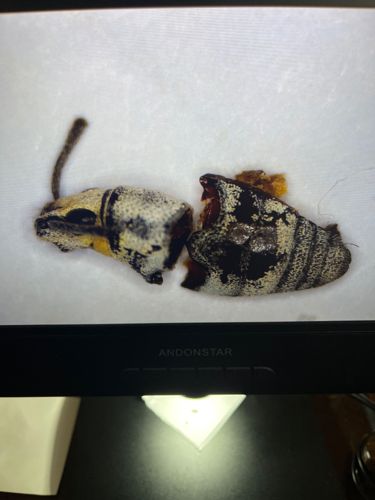Weevil (Broad-nosed Weevil likely)
Scientific Name: Curculionidae (likely a species within Entiminae subfamily based on broad snout)
Order & Family: Coleoptera (Beetles), Curculionidae (Weevils)
Size: Most weevils range from 1 mm to 50 mm in length. The specific specimen in the image appears to be on the larger side for a weevil, possibly several millimeters to over a centimeter based on the magnification implied.

Natural Habitat
Weevils are found in a wide variety of habitats depending on the species, including forests, agricultural fields, gardens, grasslands, and even indoor environments like pantries. They are typically associated with specific host plants.
Diet & Feeding
Weevils are herbivorous. Adults and larvae typically feed on plant material. Larvae often bore into stems, roots, seeds, fruits, or wood, while adults feed on external plant parts like leaves, stems, flowers, and fruits, often causing characteristic notches or holes.
Behavior Patterns
Weevils are generally slow-moving insects. Many species are flightless or poor flyers. When disturbed, some weevils play dead (feign death) by dropping to the ground and remaining motionless. Their life cycle typically involves complete metamorphosis: egg, larva, pupa, and adult. Many species are nocturnal, feeding at night and hiding during the day.
Risks & Benefits
Risks: Many weevil species are significant agricultural pests, causing damage to crops (e.g., cotton boll weevil, granary weevil, maize weevil) and stored products. Their feeding can reduce yields, quality, and market value. Benefits: Some weevils are used as biocontrol agents to manage invasive weeds. They also contribute to decomposition of plant matter and are a food source for other animals.
Identified on: 10/5/2025